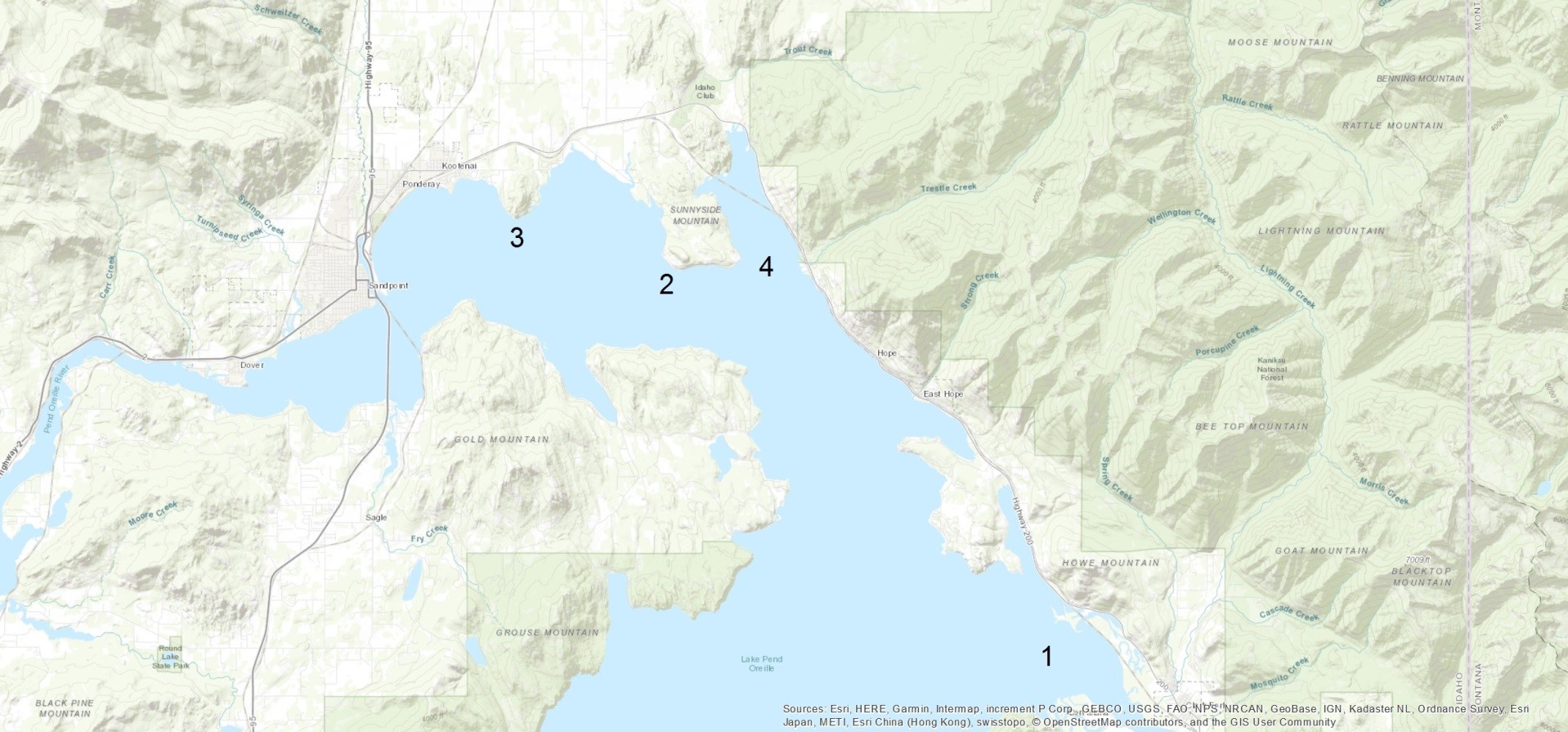Since 2006, IDFG has worked to manage and suppress lake trout, which threatened to collapse the kokanee population. This program has been tremendously successful, leading to recovery of kokanee in Lake Pend Oreille, and continues to have strong public support. In recent years, we have observed a new threat from a growing walleye population. Walleye were illegally introduced in the Clark Fork River, and like lake trout, are a top-level predator. Although walleye are a popular sport fish, they pose a significant risk to sustaining the Lake Pend Oreille fishery.
Walleyes are voracious predators, and in Lake Pend Oreille they feed primarily on kokanee in the deeper parts of the lake and yellow perch in the shallower areas. IDFG is concerned that walleye numbers may continue to increase to the point where they cause excessive predation on kokanee and compete with or reduce abundance of highly-valued sport fish species, such as rainbow trout and bass, as well as native bull trout and cutthroat trout.
Walleye in Lake Pend Oreille are fast growing, early maturing, and are already widely distributed throughout the lake and in the Clark Fork and Pend Oreille rivers. Our goal is to find effective ways to manage walleyes at a low enough density that they do not jeopardize the world-class fishery in Lake Pend Oreille. In accordance with IDFG policy, there are no seasons or bag limits on walleye in Lake Pend Oreille, and we encourage anglers to fish for and harvest walleye.
In 2018, to begin evaluating the feasibility of gill netting as a tool to manage walleye abundance, IDFG contracted a commercial netting company to net for three weeks between April 16 and May 4. Netters used short duration (4 - 5 hour) gill net sets to target and remove walleye, while minimizing incidental mortality on other species. In 2019, we repeated the effort by netting between April 15 and May 3. Nets were set in four areas of the lake (Figure 1, Table 1).
During the three-week period, a total of 870 walleye were captured and 853 of those fish were removed (Table 2). Nine of the captured walleye contained coded wire tags, which were implanted for the angler incentive reward program. Since those nine walleyes were removed and were no longer available for anglers to catch and return for the $1,000 reward, nine new walleyes were coded wire tagged and released alive back into the lake in 2019. Additionally, seven walleyes were implanted with telemetry tags and released alive, and one walleye contained an active telemetry tag and was also released alive. We also removed 12 lake trout and 72 northern pike. There was very little incidental mortality for non-target species (Table 2), including 100% survival of bass. Table 1 provides the numbers of fish captured and released by netting location and Table 2 provides the number captured and removed from 2019. The removed fish were not wasted, and over 900 walleye, lake trout, and northern pike were brought to either the Bonner County Food Bank in Sandpoint or the ABC Food Bank (Athol Gleaners) in Athol for distribution to those in need.
In 2020, a similar three-week spring walleye removal effort will be repeated along with a lakewide standardized walleye survey in the fall. Catch data from the fall 2020 walleye survey will be compared to past surveys dating back to 2011 to evaluate walleye population trends over time. Results from this standardized survey will help us assess whether walleye removal efforts using netting and angler harvest are curbing walleye population growth. These data will provide us with the information needed to manage walleye effectively in future years.



Figure 1. Areas fished with gill nets during 2019 walleye sampling. See Table 2 for numbers of sport fish caught during sampling.

